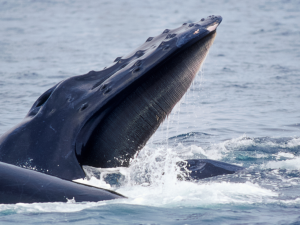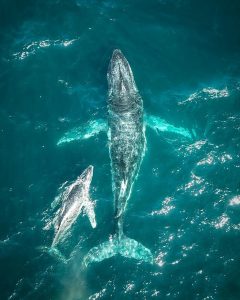A new WDC report has issued an urgent call for collaborative efforts to address the critical issue of chemical pollution and its impact on cetaceans
Chemical pollution, driven by the presence of synthetic contaminants, is an escalating global environmental threat to our oceans. These contaminants, known as Persistent Organic Pollutants (POPs) and heavy metals, are persistent, bioaccumulative, and toxic (PBT). While some legacy POPs like polychlorinated biphenyls (PCBs) and DDT have been banned for decades, their insidious presence continues to plague marine environments. Newer threats, such as per- and poly-fluoroalkyl substances (PFAS), are also emerging. Cetaceans, a group of marine mammals that includes whales, dolphins, and porpoises, are particularly vulnerable due to their physiology, global distribution, and position atop the marine food chain.
Exposure and Bioaccumulation
Cetaceans are exposed to these chemicals through multiple routes, including inhalation, ingestion, and dermal absorption. POPs and heavy metals can accumulate within their bodies, particularly in the blubber, which serves as an energy store and insulation. This bioaccumulation process can have devastating consequences, as these contaminants are often remobilized during periods of stress, such as starvation, pregnancy, and lactation, or when blubber thickness varies seasonally.
Female cetaceans further face the challenge of transferring contaminants to their offspring during lactation, which can offset pollutant concentrations associated with growth and aging. While there are species-specific variations, toothed cetaceans (odontocetes) are more exposed due to their position at the top of the food chain, consuming prey that has already bioaccumulated these pollutants. Mysticetes, on the other hand, feed lower on the food chain and tend to have lower exposure levels.
Geographical distribution plays a crucial role in exposure. Cetaceans in different regions may have vastly different contaminant levels due to diet variations and proximity to pollution sources. Climate change has further disrupted migration patterns, exposing cetaceans to varying levels of pollution as they adapt to new habitats.
Lulu’s Story: The Harrowing Reality
Meet Lulu, an orca from the Scottish West Coast Community. This once-thriving population has dwindled from about 10 members to merely two, both of them male. Lulu’s tragic story sheds light on the devastating impacts of chemical pollution. When she passed away, scientists discovered that her body contained an alarmingly high concentration of toxic chemicals, ranking her as one of the most contaminated marine mammals on record. Lulu’s fate epitomizes the destructive potential of chemical pollution, decimating ocean ecosystems and wiping out families like hers.
In this video from Whale and Dolphin Conservation (WDC), an orca named Lulu explains the devastating impacts our chemicals have had on her, her family, and her ocean home.
Conclusion
The threat of chemical pollution to the health of cetacean populations around the world demands urgent attention. These intelligent and charismatic creatures, crucial to marine ecosystems, are grappling with a complex web of pollutants that threaten their health and survival. To address this crisis effectively, a comprehensive approach is needed, combining regulatory changes, waste management improvements, public education, and international cooperation. Failure to act decisively risks not only the welfare of cetaceans but the health of our oceans and the entire planet. It is time to recognise the urgency of this issue and take meaningful steps toward a cleaner and safer marine environment for all.








